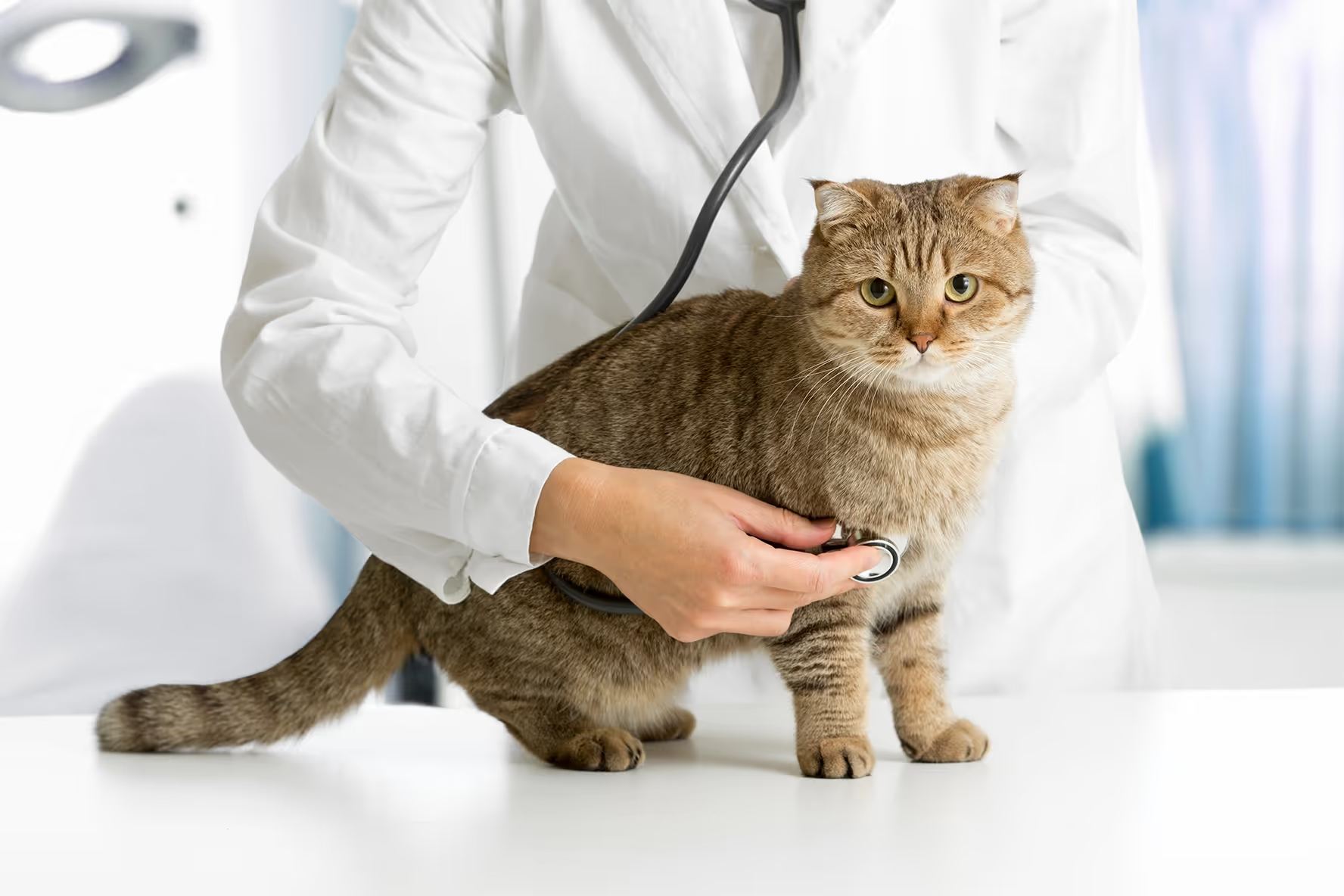
Feline lymphoma is one of the most common cancers affecting cats. It’s characterized by the malignant growth of lymphocytes, a type of white blood cell integral to the immune system. This cancer can occur in various parts of the body, including the lymph nodes, gastrointestinal tract, liver, spleen, and bone marrow, making it a pervasive and concerning condition for cat owners. Understanding the prognosis of cat lymphoma is crucial for pet owners as it helps in making informed decisions about treatment options and managing expectations regarding their pet's health and longevity.
Prognosis, or survival time, encompasses several critical aspects like the amount of cancer in the body, the health status of the cat, and the overall quality of life a cat can expect during and after treatment. Knowing the typical course of the disease allows pet owners to better prepare for the future, both emotionally and practically. Moreover, understanding the different stages of lymphoma can help in recognizing symptoms early and seeking timely medical intervention, potentially improving outcomes.
What is Cat Lymphoma?
Cat lymphoma is a type of cancer that originates in the lymphocytes, which are a kind of white blood cell essential to the immune system. These malignant cells can increase in various parts of the body. Lymphoma in cats can be classified into several types based on its location and characteristics.
Common types of cat lymphoma include gastrointestinal lymphoma, which affects the stomach and intestines and is the most prevalent form in cats; multicentric lymphoma, which involves multiple lymph nodes and organs; and mediastinal lymphoma, which occurs in the chest cavity, often affecting the thymus and regional lymph nodes, and many others such as nasal, kidney, and central nervous system Each type presents with distinct symptoms and progression patterns.
You can learn more about the different types of feline lymphoma in our post here.
Stages of Cat Lymphoma
The staging system for feline lymphoma helps determine the extent of the disease and guides treatment decisions. It is crucial for understanding and planning appropriate care.1
- Stage I: Involvement of a single lymph node or organ. This early stage often has the best prognosis if detected and treated promptly.
- Stage II: Involvement of two or more lymph nodes on one side of the diaphragm. The disease is more advanced but still localized. A single tumor without regional lymph node enlargement
- Stage III: Generalized lymph node involvement throughout the body. Extensive primary unable to be removed through surgery abdominal disease. This stage indicates widespread disease, typically leading to a more guarded prognosis.
- Stage IV: Stages 1-3 with involvement of the liver and/or spleen. These organs are commonly affected in advanced stages, often worsening the prognosis.
- Stage V: Stages 1-4 with initial involvement of the central nervous system or bone marrow or both. This final stage indicates extensive disease spread and is associated with the poorest prognosis.
Feline lymphoma stages can also be divided based on location it’s found in the body, some locations requiring different treatment than others even if the stage is the same.4
Each stage reflects the progression of the disease, with higher stages indicating more extensive spread and typically a less favorable prognosis.
Prognosis, Survival Time, and Duration
The prognosis of cat lymphoma varies significantly based on the stage at diagnosis and other influencing factors. Location and type of lymphoma can make a large impact on the viability of treatment as well as the quality of life within a cat’s survival time.
For Stage I-II lymphoma, the prognosis is generally more favorable, especially with prompt and effective treatment. Cats in these early stages can experience survival times ranging from several months to a few years depending on the type of lymphoma. Treatment typically involves chemotherapy, which can lead to remission and improve the quality of life. Surgery can also be an option for early stage lymphoma.
In contrast, Stage III-V lymphoma indicates a more advanced disease with widespread involvement. Even with aggressive treatment, survival times for these stages are usually shorter, typically ranging from a few months to a year. Advanced stages require more intensive management and may result in a reduced quality of life due to the extent of disease spread.
Several factors influence the prognosis of cat lymphoma:
- Type of lymphoma: Different types have varying degrees of aggressiveness. For instance, large cell gastrointestinal lymphoma often has a poorer prognosis compared to other forms, but small cell gastrointestinal lymphoma has the best prognosis.
- Age and overall health of the cat: Younger, healthier cats can respond better to treatment.
- Response to treatment: Cats that respond well to initial treatment typically have a better prognosis. The ability to achieve and maintain remission is a crucial factor in determining long-term outcomes.
Survival times can vary drastically depending on many factors but the most common way to break down the more likely survival time is often between low grade and high grade forms.
Low Grade Lymphoma in Cats
Low grade lymphoma progresses more slowly than its high grade counterpart, necessitating a different chemotherapy regimen. Typically, 80-90% of cats with low grade lymphoma respond well to treatment, although it may take a few weeks to observe positive changes.3 The most common type of low grade lymphoma is gastrointestinal. The lymph node form is often called Hodgkin’s lymphoma.
Cats with low grade lymphoma generally have an average survival time of 1.5-2 years.2 As with high grade lymphoma, various factors such as the cat’s overall health and the specifics of the lymphoma can influence survival outcomes.
High Grade Lymphoma in Cats
High grade lymphoma is an aggressive form of cancer in cats. For cats with a high grade diagnosis, chemotherapy can lead to positive responses in over half of the cases. Even cats that only achieve partial remission often see significant improvements in their quality of life.
On average, cats with high grade lymphoma have a survival time of 6-9 months with therapy and, sadly only a few weeks to months if no therapy is pursued. However, this can vary widely based on several factors, including the cat's feline leukemia status, the cancer's progression at the time of diagnosis, the primary location of the tumor, and the type of therapy chosen.2
Ultimately, while early-stage lymphoma can offer hope for longer survival with appropriate treatment, advanced stages often pose more significant challenges. Should you notice any signs that your cat may not be feeling like their normal self, check in with your vet if there’s anything to worry about. You can read more about possible signs of lymphoma in our post here.
Quality of Life Considerations
Maintaining a good quality of life for cats with lymphoma is crucial, as it directly impacts their well-being and happiness. Managing the symptoms of cancer and the side effects of treatment can be challenging, but it is essential to ensure that cats remain comfortable and as healthy as possible during their illness.
Here are some key tips for pet owners to improve their cat's quality of life:
- Nutrition and Hydration: A balanced diet tailored to the cat’s specific needs can help maintain their strength and energy levels. There are many different prescription diets available for cats with unique needs, such as kidney and liver support. Ensure that your cat has access to fresh water at all times to prevent dehydration.
- Pain Management: Effective pain management is vital for enhancing the quality of life. Consult your veterinarian for appropriate pain relief medications and dosages to keep your cat comfortable. Most forms of lymphoma are not painful and do not require pain medications.
- Regular Veterinary Check-Ups: Frequent check-ups allow for close monitoring of the cat’s condition and early detection of any complications or changes in their health. This proactive approach enables timely adjustments to treatment plans, ensuring optimal care. Your oncologist will establish a schedule for treatment with you based on your cat’s specific needs and the advancement of their lymphoma.
- Creating a Comfortable Environment: Make your home a stress-free and comforting space for your cat. Provide soft bedding, quiet areas, and easy access to their favorite spots. Reducing stress can significantly improve their overall well-being.
By focusing on these aspects, pet owners can help their cats with lymphoma live more comfortably and enjoy a better quality of life despite their illness.
Treatment Options
Treating cat lymphoma involves various approaches, each aimed at prolonging and improving the quality of life. Common treatments include:1
- Chemotherapy: Often the first line of treatment, chemotherapy can induce remission and extend survival times. It’s generally well-tolerated by cats much differently than in people.
- Radiation Therapy: Used in cases where lymphoma is localized, radiation therapy can effectively target and shrink tumors especially lymphoma in the nose.
- Surgery: Typically reserved for specific cases, such as gastrointestinal lymphoma, surgery can remove localized tumors and improve symptoms.
- Palliative Care: Focused on comfort rather than cure, palliative care manages symptoms and maintains quality of life for cats with advanced disease.
The impact of these treatments on prognosis and quality of life varies.2 Chemotherapy and radiation can offer significant benefits in the early stages, while palliative care is immensely helpful to keeping your cat comfortable and happy with advanced stages of lymphoma.
You can learn more about the benefits of palliative care and signs that your cat’s quality of life may be declining in our post here.


